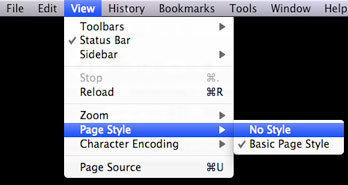How to Proofread Your Website

At some point toward the end of a web design project, the client will have the opportunity to view a fully functional version of the site before it goes live. In this late phase of the project, clients are usually reviewing content they've previously seen, so they may be simply skimming words and looking for glaring errors. However, in this final review, clients should dig deeper to discover potential errors in the coding or design that could interfere with the site's search engine relevance.
Review the hidden text
 Search engines cannot interpret photos, but your web designer can write descriptions of photos (or alt tags) to help search engines understand the content of images. For example, a photo of the city of Indianapolis might have an underlying description that says, “Indianapolis skyline.” Alt tags are also helpful for people with vision impairments who use screen readers to access websites, because the software reads the alt-tag text aloud.
Search engines cannot interpret photos, but your web designer can write descriptions of photos (or alt tags) to help search engines understand the content of images. For example, a photo of the city of Indianapolis might have an underlying description that says, “Indianapolis skyline.” Alt tags are also helpful for people with vision impairments who use screen readers to access websites, because the software reads the alt-tag text aloud.
The best way to view the alt tags is to open the preferences menu for your web browser and turn off images. If you don't see text where the photo used to be, your designer may have forgotten to include alt tags.
Each page of your site should also have a unique description tag and title tag. You can see the title in the page tab at the top of your browser. To see the description, go to the "View page source" feature on your web browser and look for the meta description tag, which should be close to the top. (You should also be able to search for the word “description” while looking at the source.) Missing or inaccurate descriptions and titles can lower your placement in search engine results.
Look for code-generated typos
Special characters such as the ampersand, fractions, MS Word-generated "curly" quotes, em-dashes, and others are not read consistently on every computer. That's why designers should replace special characters with coded characters that all computers can interpret correctly. If you see new typos where a special character should be, the coding needs to be updated.
Proofread website image replacement
CSS image replacement functions somewhat like an alt tag, helping search engines and visually-impaired users understand content. Underlying text explains a logo or a designer font on a page.
Even if words are spelled correctly in a designer font or logo, always check to see if the underlying text is correct.
 The easiest way to see the text behind images is with the Firefox web browser, which is a free download. Once you have installed Firefox, you can disable your website’s visual stylesheet and see the pure HTML (without having to look at the code). To do this go to View > Page Style > No Style.
The easiest way to see the text behind images is with the Firefox web browser, which is a free download. Once you have installed Firefox, you can disable your website’s visual stylesheet and see the pure HTML (without having to look at the code). To do this go to View > Page Style > No Style.
Firefox also allows you to see if your site is designed according to modern standards. If your website navigation completely disappears when viewing your site with the stylesheet disabled, that's a problem. Search engines, mobile phone users, and visitors using screen readers will not be able to get past your homepage.
Take time to thoroughly proof your website before it goes live so you have an optimal user experience for every visitor.
Was this article helpful to you? Did you find any concerns on your website? Please let us know with a comment.
